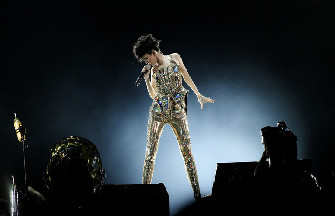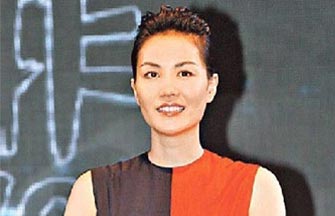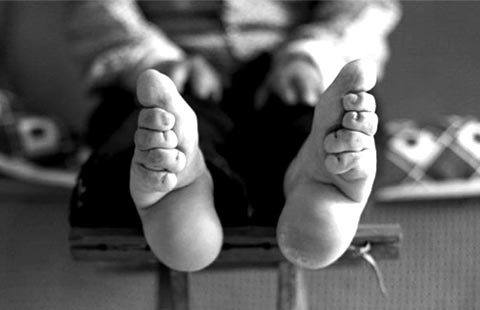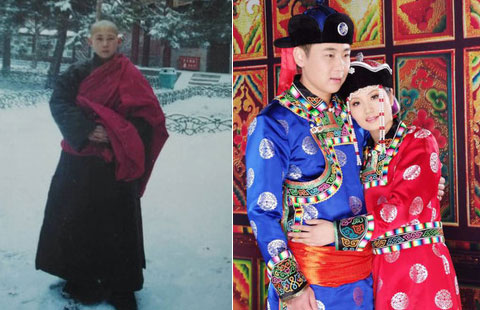Science or art? Author relishes fine points of reading
Updated: 2014-08-06 07:19
By Dwight Garner in New York (China Daily)
|
||||||||
Like a TED talk or a lesser Alain de Botton book, Peter Mendelsund's What We See When We Read is friendly and shyly philosophical, filled with news you can almost use.
It explores a simple but confounding question, one the author wrests from theorists, literary and otherwise, and presents this way: "What do we see when we read? (Other than words on a page.) What do we picture in our minds?" Mendelsund looks at these questions from 1,000 angles, zooming in and out as if surveilling them with Google Earth.
Because the author is also the associate art director of Alfred A. Knopf, What We See When We Read is heavily and often whimsically illustrated. It's redolent of X-Acto knives and drawing tables and graphic design software and clunky eyeglasses.
I'd like to be able to report that cracking and unpacking this exquisite package is a thoroughgoing joy. But What We See When We Read is so self-consciously charming that the senses frequently rebel.
Mendelsund too often speaks to us as if he is feeding nuts to fragile woodland creatures. We are told many things we already know. It's a tidy little biosphere, one that runs on tweeness of its own excreting.
The book poked me awake on Page 203, however, and began to keep me awake. Page 203 is where Mendelsund prints a photograph of the actress Keira Knightley in the title role of the 2012 film Anna Karenina and declares: "This - the picture to the left - is a form of robbery."
He means mental robbery, of course, the sort that all film adaptations of novels commit. He observes, in what's not an original thought but a vital one: "One should watch a film adaptation of a favorite book only after considering, very carefully, the fact that the casting of the film may very well become the permanent casting of the book in one's mind. This is a very real hazard."
This book's midpoint, in fact, is about where you realize that Mendelsund does several things well. He has a wide range of reference, taking core samples from the work of Joyce, Dickens, Nabokov and Woolf, among others, and he quotes with care. This line from Oliver Sacks sums up some of this book's subject matter: "One does not see with the eyes; one sees with the mind."
Mendelsund notes that we can read novels quickly, as if driving through them, or slowly, as if walking, and have distinct experiences. About this he notes, "The best book for me: I drive through it quickly but am forced to stop on occasion, to pull over and marvel."
He can be a canny close reader. He prints a few descriptive sentences of a couple walking together from Wharton's House of Mirth, and mentally X-rays them. "It is helpful that we are told about the shape of this character's hair and the thickness of her lashes," he writes. "But what is truly being communicated to us is a rhythm. The rhythm, in turn, conveys a young man's elation at walking alongside a young woman."
You read this and you think: Yes.
To his credit, Mendelsohn keeps his tone light while thinking deliberately about fundamental things. He moves from a remembered family trip along a river, for example, to a sense that, as he writes, "Words are effective not because of what they carry in them, but for their latent potential to unlock the accumulated experience of the reader."
A gifted designer, Mendelsund is more alert that most to inflection and innuendos. He's the man, after all, who designed the dust jacket for Stieg Larsson's The Girl With the Dragon Tattoo.
His humbleness is another of this book's good qualities. "I am a visual person (so I am told)," he says. "I am a book designer, and my livelihood depends not only on my visual acuity in general, but on my ability to recognize the visual cues and prompts in texts. But when it comes to imagining characters, daffodils, lighthouses, or fog: I am as blind as the next person."
(China Daily 08/06/2014 page20)

 Star Stefanie Sun holds concert in Beijing
Star Stefanie Sun holds concert in Beijing
 Faye Wong's manager refutes star's drug rumors
Faye Wong's manager refutes star's drug rumors
 Lu Yi and daughter Bei Er pose for street snaps
Lu Yi and daughter Bei Er pose for street snaps
 Photoshoots of actress Li Xiaomeng
Photoshoots of actress Li Xiaomeng
 Council of Fashion Designers of America Awards
Council of Fashion Designers of America Awards
 Fan Bingbing, first Chinese actress in Barbie Hall of Fame
Fan Bingbing, first Chinese actress in Barbie Hall of Fame
 Awarding ceremony of 2014 hito Pop Music held in Taipei
Awarding ceremony of 2014 hito Pop Music held in Taipei
 Zhao Liying's photo shoot for Children's Day
Zhao Liying's photo shoot for Children's Day
Most Viewed
Editor's Picks

|

|

|

|

|

|
Today's Top News
Barrier lakes pose threat in quake-hit Ludian
2 Canadians probed in theft of State secrets
Envoy dismisses building freeze in S. China Sea
Microsoft gets warning: Don't block watchdog
New York tests possible Ebola victim
Premier Li visits Yunnan quake site
373 dead as strong quake jolts SW China
US ready to help China in quake relief
US Weekly

|

|





